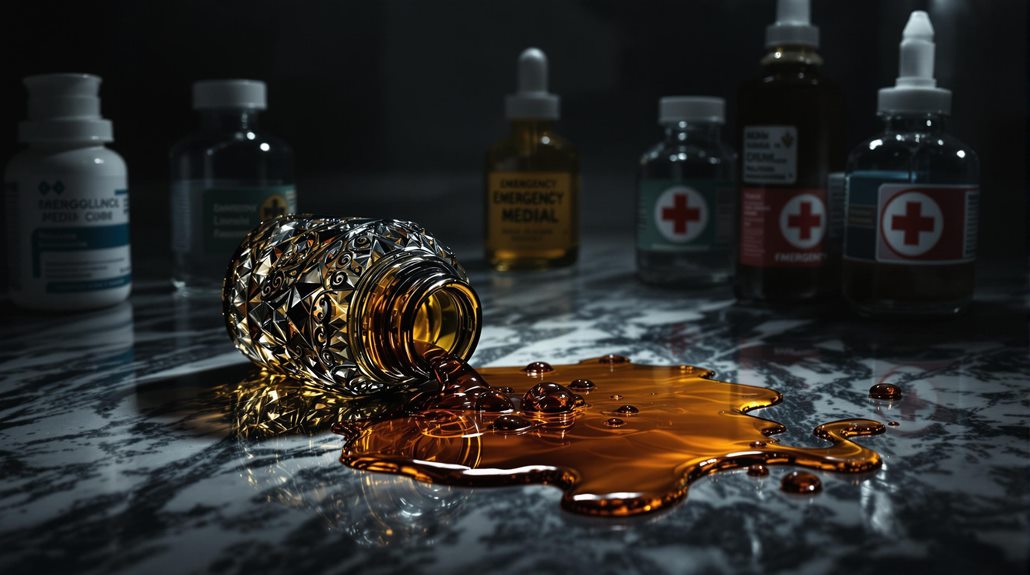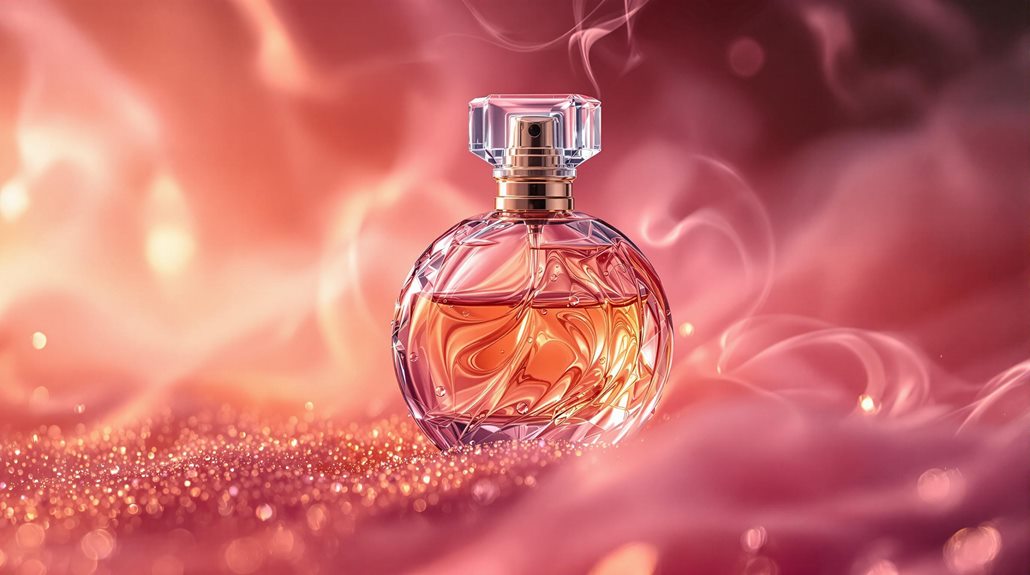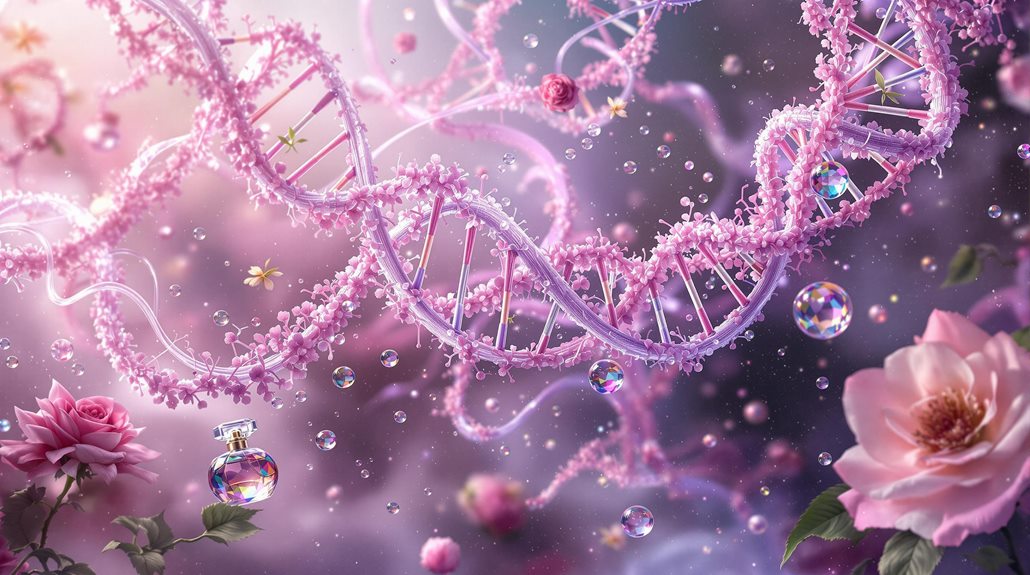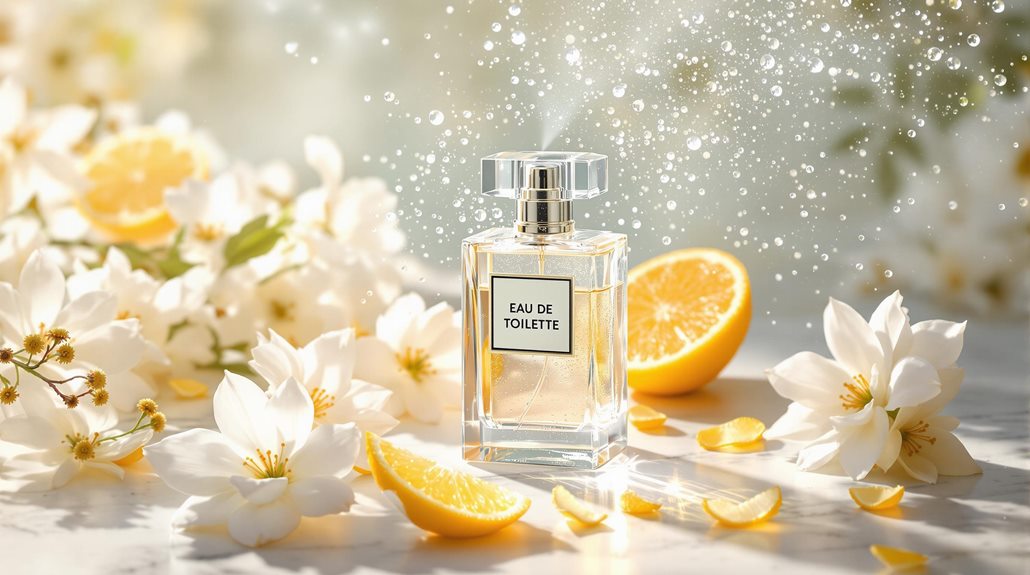What Is Pheromone Perfume? How It Works and Why It's Popular
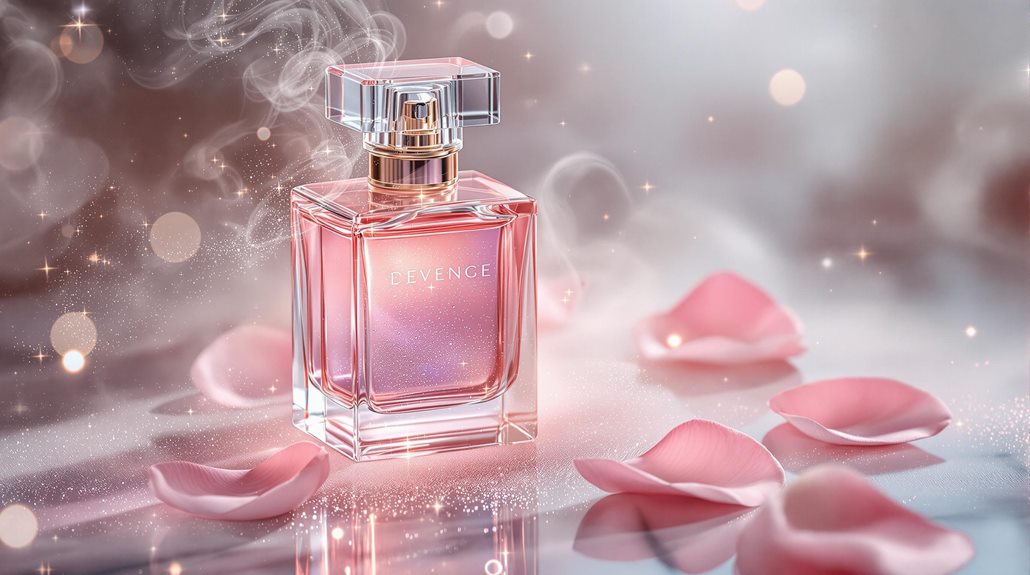
Pheromone perfumes are fragrances infused with synthetic versions of natural human attraction chemicals that aim to amplify your romantic appeal. These scents combine lab-created compounds like androstenol and androstadienone with traditional perfume ingredients to mimic the body's natural attraction signals. While they've gained popularity for their promised ability to enhance social and romantic interactions, scientific evidence supporting their effectiveness remains limited. You'll often find them marketed as "pheromone-infused essential oils" with claims of dramatic results. The truth about these intriguing products and their actual impact on attraction lies beyond the marketing hype.
The Science Behind Pheromones
When you hear about pheromones, you're dealing with powerful chemical signals that nature has perfected over millions of years. These chemical compounds serve as a form of nonverbal communication between members of the same species, triggering various social and behavioral responses.
While the existence of human pheromones is widely accepted, their exact role in human behavior remains complex. According to studies cited in the National Library of Medicine, humans can detect and respond to these subtle chemical signals, though not as overtly as other animals. You'll find that these molecular messengers may influence your attraction to potential partners and even affect your mood or behavior without your conscious awareness.
The scientific community continues to debate the extent of pheromones' impact on human interactions. When you're examining synthetic pheromone products, it's important to understand that their effectiveness isn't fully proven. Some researchers suggest that positive results from pheromone perfumes might be attributed to the placebo effect rather than actual chemical responses. This uncertainty hasn't stopped the growing popularity of pheromone-based products, though you should approach their marketing claims with healthy skepticism.
Origins of Pheromone-Based Fragrances
The fascinating world of pheromone-based fragrances emerged in the late 20th century when perfume makers sought to utilize nature's attraction signals. Drawing inspiration from the animal kingdom, where chemical signals guide instinct and mating behavior, researchers began exploring how to capitalize on these powerful natural compounds for human attraction.
You'll find that these fragrances were developed by studying how animals use pheromones to communicate and attract potential mates. Scientists identified key human pheromone compounds like androstenol, androstenone, and androstadienone, which they believed could trigger similar instincts in people. Perfume manufacturers then created synthetic versions of these pure compounds to blend with traditional scent ingredients.
The concept behind these fragrances stems from our most basic natural drives, attempting to enhance the subtle chemical signals we naturally produce. While traditional perfumes focus solely on pleasant aromas, pheromone-based products aim to work on a deeper, more primitive level. You'll notice that marketing campaigns often emphasize this connection to our innate attraction mechanisms, though scientific evidence regarding their effectiveness remains debatable.
Common Ingredients and Formulations
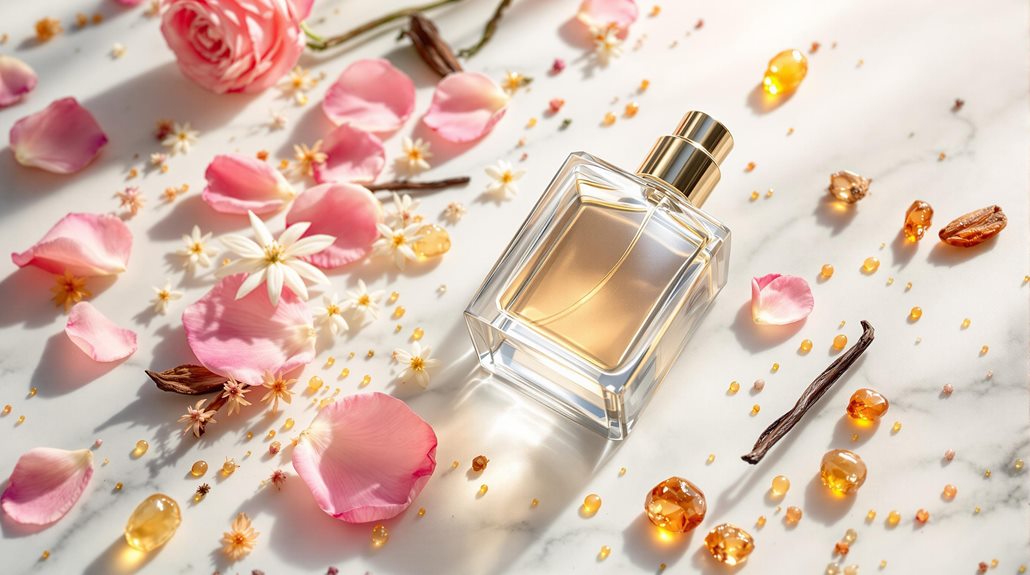
Delving into pheromone perfume ingredients reveals a complex blend of synthetic compounds designed to mimic natural attraction signals. The primary components you'll find in these fragrances are synthetic versions of androstenol and androstenone, which manufacturers claim can trigger attraction responses in potential mates.
When you're exploring pheromone oil options, you'll encounter products that combine these synthetic compounds with natural musk derived from animals like civet cats, beavers, and musk deer. Many brands market their products as "Pheromone Infused Essential Oil," incorporating various essential oils to enhance the overall fragrance profile. However, you should know that what's in your pheromone perfume actually might not be fully disclosed, as the FDA doesn't regulate fragrance ingredients beyond basic safety requirements.
While these formulations aim to stimulate your vomeronasal system, the effectiveness of synthetic pheromones in human attraction isn't conclusively proven. The challenge lies in replicating the complex chemical signals that natural pheromones produce. When shopping for these products, you'll want to pay attention to ingredient transparency and be aware that results may vary considerably among users.
Marketing Claims Versus Reality
Marketing promises surrounding pheromone perfumes often paint an enticing yet misleading representation of their effectiveness. While brands claim their products can dramatically amplify your sexual appeal and romantic success, the scientific evidence supporting these assertions is surprisingly limited. When you examine the research, you'll find that the effects of synthetic pheromones on human attraction are typically minimal, and scientists still don't fully understand how they work.
You'll frequently encounter glowing testimonials and viral social media posts promoting these products, but it's important to separate marketing hype from reality. Most pheromone perfumes contain lab-created versions of compounds found in human sweat and secretions, yet there's little proof they can reliably produce the advertised results. Instead, your success in attraction likely depends more on factors like confidence, personal grooming, and natural chemistry with others.
Before investing in pheromone perfumes, consider that the confidence surge you might feel from wearing them could be more influential than any chemical effects. While these products aren't entirely without merit, they're unlikely to deliver the dramatic results that marketing materials suggest.
Consumer Experiences and Results

Drawing from real-world testing, pheromone perfumes often fall short of their promised allure. When putting products like Pure Instincts pheromone perfume to the test, users frequently uncover that the marketed enhancement of sex appeal doesn't match reality. A month-long trial revealed that wearing Instinct Pheromone Perfume in social settings produced no substantial increase in attraction or positive attention from others.
The Pure Instincts roll-on Pheromone's weak sillage poses a particular challenge, as the scent doesn't project well enough to influence those around you. Even when layered with other fragrances, the Instinct roll-on fails to deliver noticeable improvements in attractiveness. While some users might detect the scent, their responses vary widely based on individual preferences and natural body odor compatibility.
You'll find that compliments and attention levels while wearing these products typically remain consistent with those received when wearing regular perfumes. This suggests that despite compelling marketing claims, pheromone-enhanced fragrances may not significantly impact your attractiveness. The reality is that these products often don't deliver the dramatic increase in romantic appeal that many consumers hope to achieve.
Alternative Natural Attraction Methods
Natural attraction methods offer more reliable results than synthetic pheromone products. While products like Instincts roll-on Pheromone Perfume and other types of fragrances claim to amplify attraction, you'll find more success focusing on proven self-improvement strategies.
Instead of relying on eau de parfum or pheromone oil, start by prioritizing your personal hygiene and grooming routine. Your natural scent, enhanced by good self-care, can be more appealing than any artificial perfume. Engage in regular exercise, maintain a balanced diet, and safeguard you're getting enough sleep to naturally enhance your attractiveness.
Develop your personality and social skills by pursuing interests that genuinely excite you. When you're passionate about your hobbies, you'll naturally attract others who share your interests. Work on your emotional intelligence and communication abilities to create meaningful connections. Focus on wearing clothes that augment your confidence and make you feel comfortable in your own skin.
Remember that authentic self-improvement creates a magnetic presence that's far more effective than any bottled solution. By investing in your physical and emotional well-being, you'll cultivate a natural attractiveness that's both genuine and lasting.
Conclusion
While pheromone perfumes remain a popular choice for those seeking to enhance their attractiveness, you'll want to approach marketing claims with healthy skepticism. You can try these products for yourself, but don't expect miracle results. Whether you choose synthetic pheromones or natural alternatives, remember that confidence, good hygiene, and authentic connections matter more than any bottled formula for creating genuine attraction.

